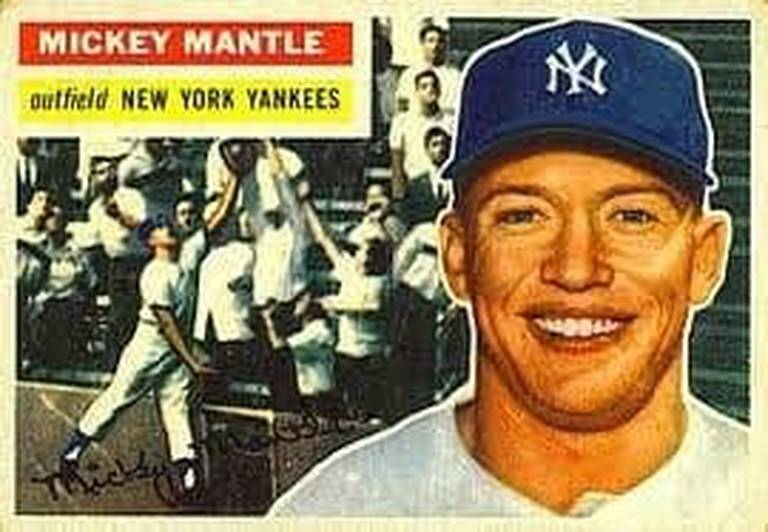
I’ll admit it: I’m different.
When I was five years old, I secured my first summer job as the cashier at a fruit stand where my aunts Helene and Christine worked.
At age seven, I tagged along with my father, waking up at 4 am on the weekends to help him change the cups at a golf course he landscaped.
Compounding on that job, I would frisk the woods of the course and grab all the stray golf balls I could find. Then, I would bring them home, clean them, and set up shop on the short par 3 fifth.
Balls were five for $1 if they had a slice or two for $1 if they were nice, clean Titleists. I made a pretty penny.
My Investment Strategy, from a Young Age
Throughout third grade, I ran my own candy shop. Warheads, Jawbreakers, Tootsie Pops... whatever you wanted, I had it.
Mom and I would go to the grocery store, and I would spend 45 minutes in the candy aisle with a notebook. I put a lot of effort into working my food costs and trying to find the right mix for the boys and girls in my class.
Girls were always drawn to the Fireballs. Even their tastebuds were more mature than the boys' at their age.
After working for six years at McDonald's, I went to college and once again started looking for an alternative investment.
At the University of Miami, I made friends with someone from Peru who had an inside track on a Lacoste warehouse. I would buy Lacoste polos wholesale, have them shipped to my on-campus apartment, and sell them for half the retail price ($72).
Sizes ranged from 3 to 9, and if you caught me just after a shipment, I would have 15-20 different colors for you to choose from in any size. I made the mistake of expanding the business outside of my university and selling on eBay, at which point I ran into a bit of legal trouble with Lacoste and their fancy New York lawyers.
Ah, fond memories.
Fast forward to today. I’m a blessed father of two in a family of four, yet I still refuse standard investments. Instead, the majority of my investment portfolio resides in baseball, basketball, and football cards.
Three-inch by five-inch pieces of paper with no real, monetary value... and my family’s future depends on them. I’ve been investing in sports cards now for five years, and I have to tell you, it’s as stressful and exhilarating as anything I’ve experienced.
How I Got Started Investing in Baseball Cards
I started collecting baseball cards when I was in grade school and lost the hobby when I started racking up student loan debt.
Gone were the days when I had discretionary money to buy the things I wanted. However, after now putting ten solid years of hard work behind me, I was able to look into this peculiar strategy.
Having followed sports closely all of my life, I knew the baseball card market pretty well. I decided to spend a few months working on message boards and attending card shows to figure out if I could form an investment strategy that made sense.
Would this ultimately be better than anything I could do in stocks, bullion, or real estate?
I thought so.
In my research, I found that baseball cards act exactly like shares of stock. When a card company (Topps, for example) would print a particular player's rookie card, they released shares of that player's stock into the market.
Some players who had high talent ceilings would initially demand a larger price, and players who were not expected to be starters demanded a smaller price.
As the player rose and fell based on their play, the market would adjust the price higher and lower. eBay acted as the broker, selling tens of thousands of cards every day and, just like a broker, charging a fee for every transaction.
The only questions that remained were this: Which player(s) should I invest in, and how much of the market could I own?
My Best Investments
1. LeBron James 2003 Topps Chrome RC
I started buying LeBron James just 18 months ago and am now almost finished selling everything I have of him. I purchased his base chrome rookie card along with serial numbered variations, of which I estimated around a total of 15,000 existed.
At my peak, I owned around 250 LeBron rookies and made a total initial investment of over $160,000. With just a few cards remaining in my possession, my profit so far has been $241,000, for an ROI of 151%.
2. Andrew Luck 2012 Playoff Contenders Ticket RC Auto
This investment was my first in football, and I began buying Andrew in the Spring of 2013. This card was very limited, with a known print run of only 550 copies plus 200 variations for a total of just 750.
At my peak, I owned 119 of these cards and invested a total of $95,000. In the summer of 2015, the value of this card increased significantly. I decided to sell the entire collection, raking in a profit of $177,000 and an ROI of 186%.
3. Madison Bumgarner 2008 Bowman Chrome RC Auto
Madison Bumgarner is the collection I've held the longest, and, in fact, I'm still investing in it. I started purchasing his cards in the summer of 2013 and haven't looked back.
There are an estimated 1,200 base autos and another 950 variation autos for a total of 2,150 copies. Of these, I currently own around 225.
To date, I have invested over $65,000 in Madison. I conservatively estimate the collection to be worth around $150,000, were I to liquidate it today.
My Worst Investments
1. Oscar Taveras 2012 Bowman w/ Chrome RC Auto
What I considered a can't-miss investment at the time, Oscar Taveras was a young prospect in the St. Louis Cardinals organization. He was as highly touted as anyone I can remember.
I began investing in his cards in early 2013 and watched him work his way up the ranks of the minor leagues, finally making the Cardinals in 2014. After hitting a game-winning HR in an NL Championship game, I thought the investment would pay big dividends.
However, less than a week later, Taveras passed away after a drunk driving accident. My total investment of $75,000 was liquidated down to around $6,000 in the following weeks.
2. Mike Zunino 2012 Bowman Draft RC Auto
This was my worst investment, top to bottom. Zunino was a masher in the minor leagues with tremendous power, and he plays the most valuable position on the field extremely well (catcher).
However, after investing more than $55,000 in Mike, he’s never provided me the opportunity to make a profit because each time he steps up to play in the big leagues, he strikes out.
I currently own around 475 of the estimated 2,100 total copies of his auto RC; if I were to sell right now, I suspect the collection would be worth no more than $10,000.
3. Tony Cingrani 2012 Bowman Chrome RC Auto
This was the farthest I've reached for an investment by picking a player that few thought would do well. I began investing in Cingrani in the spring of 2013; it was a full year before he made the major leagues, so his cards were cheap and plentiful.
With a total print run of around 2,250 copies, I was able to own a whopping 655 of them, for a total investment of $37,000. In 2014, Cingrani had a terrific rookie season -- I should have done the prudent thing and liquidated, and I could have made a substantial three-figure ROI.
However, I made the mistake of holding out for more. Cingrani has since been quite awful. I would gladly sell this entire collection for $5,000, but no buyer appears likely.
How I Track My Sports Card Investments
I track my investments in a simple Excel spreadsheet as featured below, notating the date purchased, card name, serial number (if it has one), the price paid, and whether or not the card is in my possession (vs. if it's in the mail).
Once the card is sold, I update an additional column with the sale price and transaction ID through Paypal. Then, I mark it as sold.
Every tab in the spreadsheet is for a different player. When a collection is closed, I print that sheet and file it away.
Should You Invest in Old or New Cards?
As you may be able to tell from my investments, I've chosen to put my money in more recent players than in vintage.
I've chosen this because the market is more volatile as active players gain and lose value at a much higher rate than those that are already retired and have established their legacy in the game.
One could make the parallel that vintage represents the mutual funds of the market, and newer players represent the more risky individual stocks.
Related: How to Start Investing: A Complete Guide for Beginners
Is Investing in Sports Cards a Viable Investment Option?
The sports market in general is thriving. Team revenues are up across the board. The increased salary size of the players will tell you that while media is changing the way sports are watched, and viewership continues to rise as a whole.
Investing in baseball cards has allowed me an opportunity to enjoy watching sports from a completely different perspective, while being very fortunate that my investments so far have come out far ahead.
It's not for everyone, and the level of risk is substantially higher than most other investments. However, if you take the time to understand the market -- and you know a little bit about scouting talent -- there's good money to be made.
Do you invest in a non-traditional way? Tell us in the comments!








